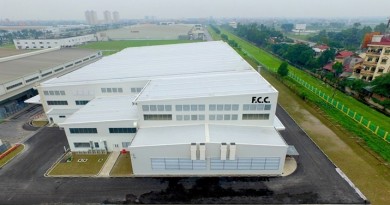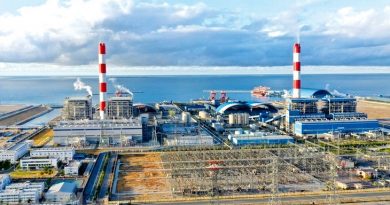Market watch: Indicators crucial to planning for a construction downturn
Market watch: Indicators crucial to planning for a construction downturn. While no one can claim to know exactly where the U.S. economy is headed, there is no shortage of indicators that help provide a reading on the nation’s economic health. These include manufacturing indexes, the stock market, the performance of major corporations, consumer spending and interest rates.
n addition to national bellwethers that are common to all businesses, there are several indicators that are specific to the construction industry. From Caterpillar’s earnings to builder sentiment and architect billings, construction leaders rely on a variety of economic signs to know when a recession is imminent.
Construction Dive interviewed the industry’s leading economists and two contractors for their take on the signals that matter most in predicting how construction will fare in the coming years. They are:
- Anirban Basu, chief economist of Associated Builders and Contractors
- Dallis Christensen, CFO, Layton Construction
- Robert Murray, economist and vice president of Dodge Data & Analytics
- Stacy Scopano, CTO, Skender
- Ken Simonson, chief economist at Associated General Contractors of America
What are the signs?
In a recent survey of Construction Dive readers, most respondents agreed that economic indicators are important to them. They said that the well-being of related industries is the No. 1 bellwether they use to track the economic outlook for their businesses. Respondents said they look to architects, heavy equipment manufacturers, home builders, crane companies, excavators and even bulldozer dealers in order to see if a slowdown is on the horizon.
Basu keeps an eye on AIA’s Billings Index, which offers a nine- to 12-month glimpse into the future of nonresidential construction spending activity. A change in architects’ billing activity can indicate an uptick or slowdown for construction firms in the near future.
Scorpio watches the index closely. “It’s a canary in the coal mine,” he told Construction Dive. “When it drops, there’s a high correlation that a few months later, construction starts and project bids drop.”
Simonson said he also looks at the AIA billings but doesn’t think they provide a clear signal as to the direction of construction spending. “The connection is too diffuse between a change in monthly billings reported by a sample of architecture firms and the amount of construction spending, which reflects past starts as well as new ones, along with many projects that may not involve architects,” he said.
Simonson noted the previous peak in construction spending occurred on February 2006 when residential spending topped out. But private nonresidential spending didn’t peak until 2008 and public construction in 2009 after residential and private nonresidential spending was in steep decline.
Of course, the cost of materials is a huge differentiator for construction pros, and recent trade wars between the U.S. and China have added an element of uncertainty to builders’ bottom lines. Scopano said he watches these costs closely.
“Prices on commodities like lumber and steel dramatically affect numbers that we may have bid months ago, but now may expose us to profit losses upon award at later — and often higher — prices,” he said.
Labor and lending
Forty percent of survey respondents said that the state of construction employment plays a top role in indicating the health of the industry. Simonson agreed, saying two of his top indicators are construction employment and job openings in construction.
Politics and government funding also play a role in how the industry will fare down the road. The federal government’s willingness to fund infrastructure projects is a leading indicator for many economists, including Murray.
Federal appropriations for the upcoming fiscal year for programs like the federal-aid highway program or the U.S. Army Corps of Engineers will provide an indication of what can be expected for such project types as highway and bridge construction, storm sewer and flood control projects, water supply and sewer projects, he said.
Lending standards are an important bellwether, too, and Murray said he reviews the quarterly surveys of bank lending officers conducted by the Federal Reserve to get a sense of the availability of funding for construction projects. He also keeps an eye on the level of debt carried by U.S. corporations, which has been rising in recent years and could threaten to slow growth.
Local indicators
In addition to looking to Washington and Wall Street, many company leaders say they also follow what’s happening in their backyards to get a read on the industry’s vitality.
Scopano said he tracks local indicators like employment data and office rent in Chicago, which in the past few years has led the country in year-over-year increases.
“These large jumps incentivize developers on new construction and increase the supply of available office space,” he noted.
Besides monitoring national trends that could impact business across the country, executives at Salt Lake City-based Layton Construction communicate closely with local architects and designers to monitor their workloads, according to Christensen.
“The lifecycle of construction begins with them, and as their workload increases or decreases, then we know a corresponding fluctuation is coming our way,” he said.
Seasonal changes
Some indicators are emphasized more than they should be, Basu noted. For instance, monthly construction spending growth or declines get a lot of attention but he likes to take a longer-term perspective because construction activity is highly seasonal and susceptible to weather delays.
Construction start numbers also can be misleading since the onset of very large projects can skew the data, he added.
While interest rates are an important bellwether for nearly all industries, Murray said that modest near-term movements in interest rates — within the range of one to one and a half percent — are not indicative of overall economic health.
“To be sure, a strong shift in interest rates, in the range of three to four percent points, will have an impact on construction activity,” he said, “but in a period of more modest interest rate shifts, other economic factors appear to have greater sway in affecting levels of construction activity.”
Recent history
If the Great Recession is an example, bellwethers can only go so far in providing a glimpse into what’s to come. For example, Simonson said that while many indicators pointed to a slowdown in 2007, most economists —including himself — were taken by surprise by the timing, severity, and duration of the downturn, which lasted until the middle of 2009.
Christensen said that signs of an impending decline helped Layton’s management to prepare for a slowdown 12 years ago. “We were able to right-size our business and stay in front of the curve so that we did not sustain any years in the red,” he said. “It was difficult, but we maintained our core values and our core contributors.”
Based on the views of many economists, including Basu, the next downturn will begin in 2020 or 2021, meaning bellwethers will take on added importance — but maybe not added accuracy.
“If leading indicators were more revealing, predicting recessions would be easy,” said Basu.







